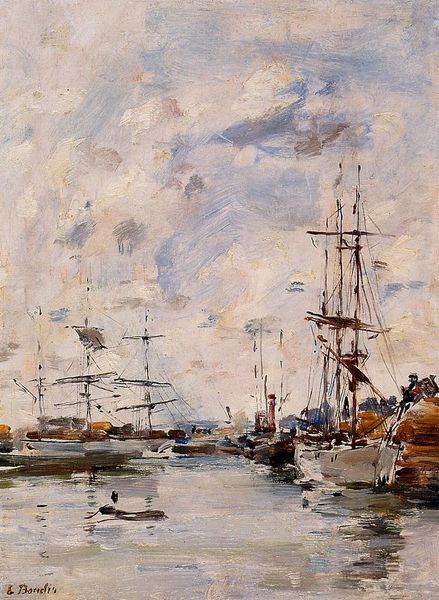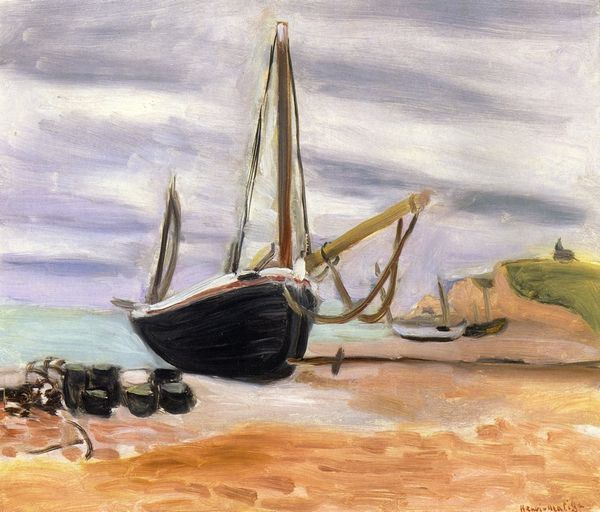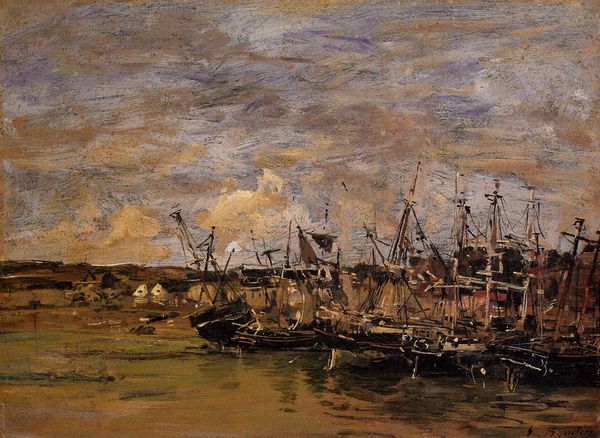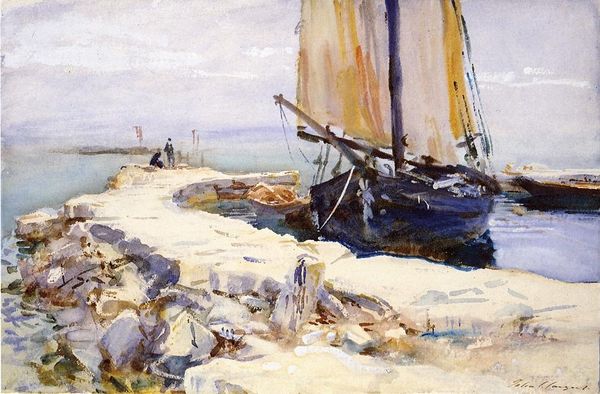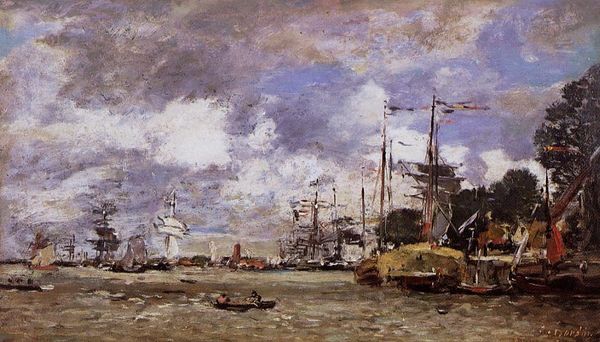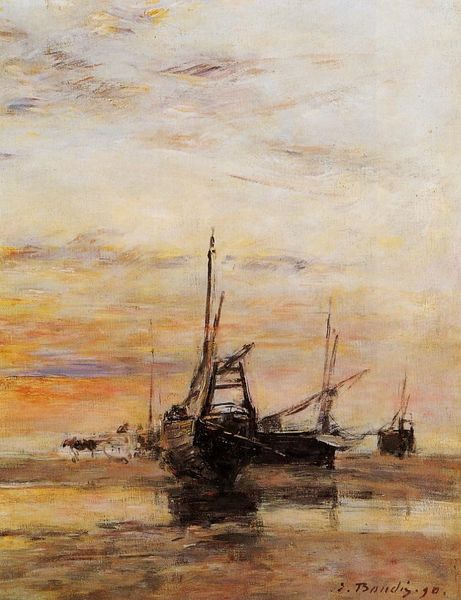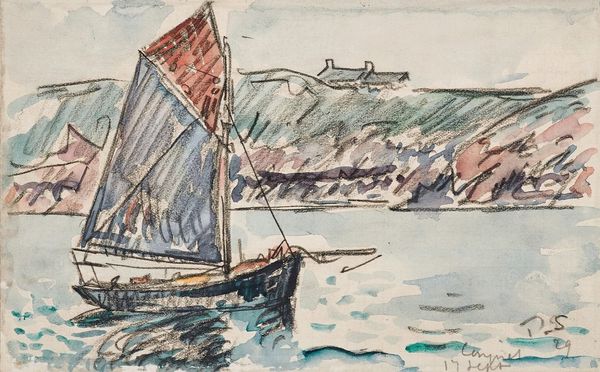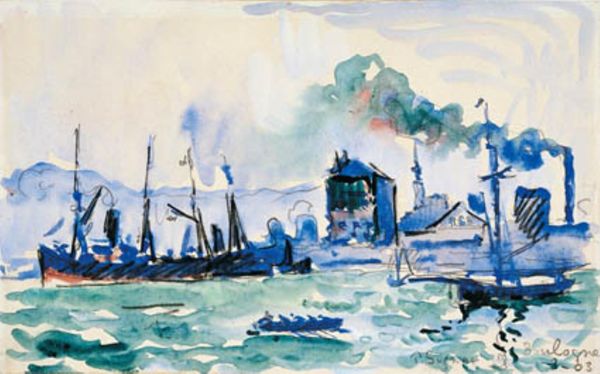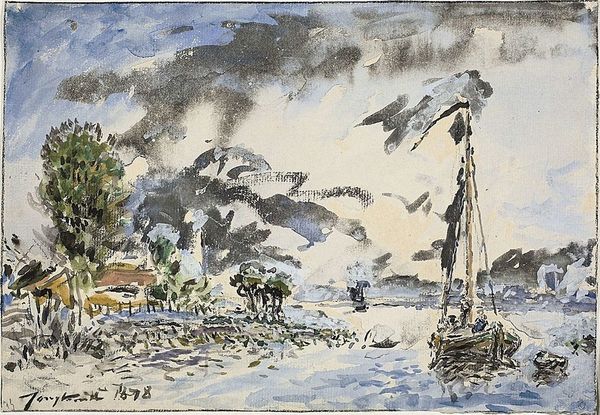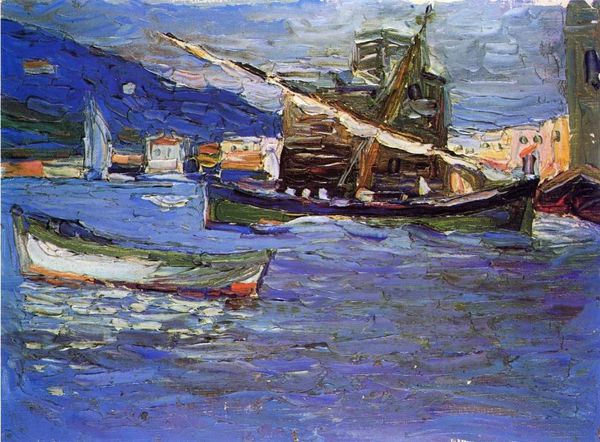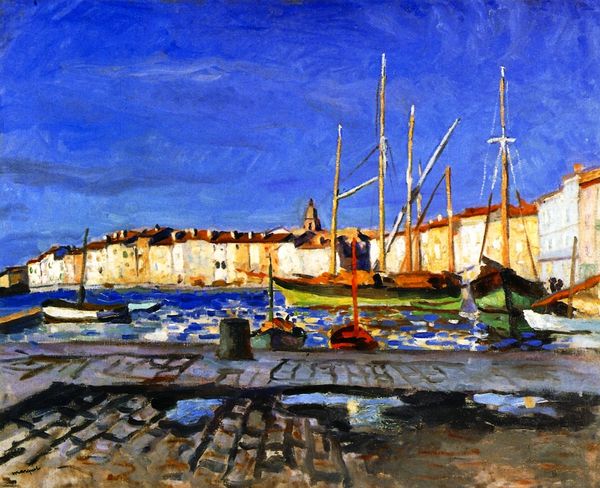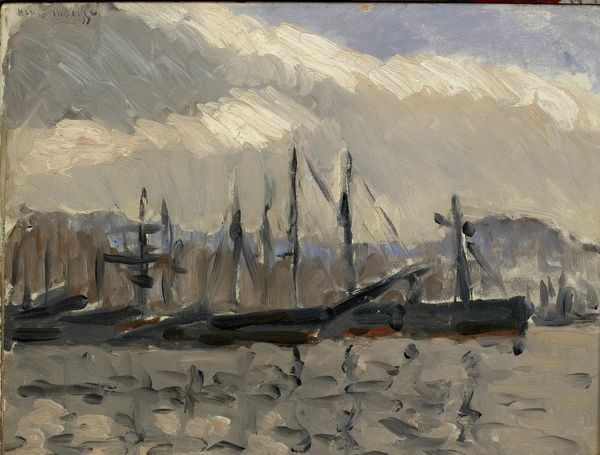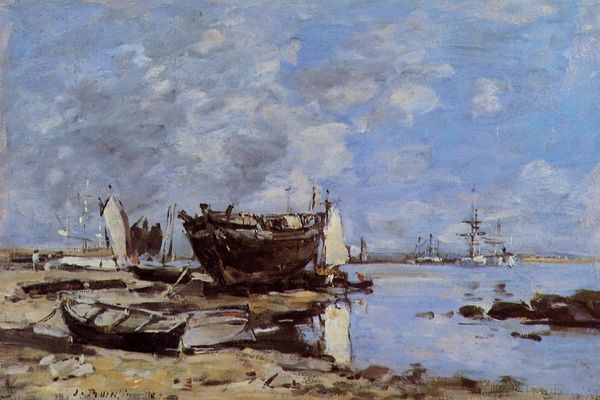
Copyright: Public domain US
Editor: Here we have Henri Matisse's "Four Boats Side by Side in the Marseilles Harbor" painted in 1916 using oil paint. It has a somber, almost grey tonality despite the impressionistic brushwork. The boats feel massive yet somewhat constrained by the composition. What stands out to you, as you consider this work? Curator: What immediately strikes me is the interplay of vertical and horizontal lines, and the way the composition flattens the space. Notice how the masts of the boats act as strong vertical counterpoints to the horizontal band of the water and the implied horizon line. Also, examine the almost abstract rendering of the clouds. The clouds are not realistically depicted; instead, they are simplified into geometric forms that echo the shapes of the boats themselves. Editor: So, the geometrical reduction and line placement carry equal importance to the colors? Curator: Precisely. Color certainly plays a role, particularly the muted palette. The limited range contributes to the overall feeling of quietude, perhaps even a sense of melancholy. Yet the primary focus seems to be on the underlying structure, on the relationships between forms. The artist wants us to focus less on narrative, and more on how the piece is organized formally and how each choice reflects upon another. Editor: It’s like he’s trying to distill the scene down to its barest visual elements. Curator: Precisely. Consider how the negative space, the areas around the boats and clouds, are just as important as the objects themselves in creating this sense of balance and tension. Can you notice these counterbalances in other parts of the painting? Editor: Looking at the boats I see a collection of rectangular shapes, reflected throughout. Even the strokes that express movement appear restrained. Curator: Yes, and in reducing Marseilles harbor to just that we’re left contemplating how he’s conveyed the sense of place or if that's the painting's objective at all. I suppose the interpretation becomes a matter of our own subjectivity, as always. Editor: I suppose so. Thanks, this was insightful.
Comments
No comments
Be the first to comment and join the conversation on the ultimate creative platform.
